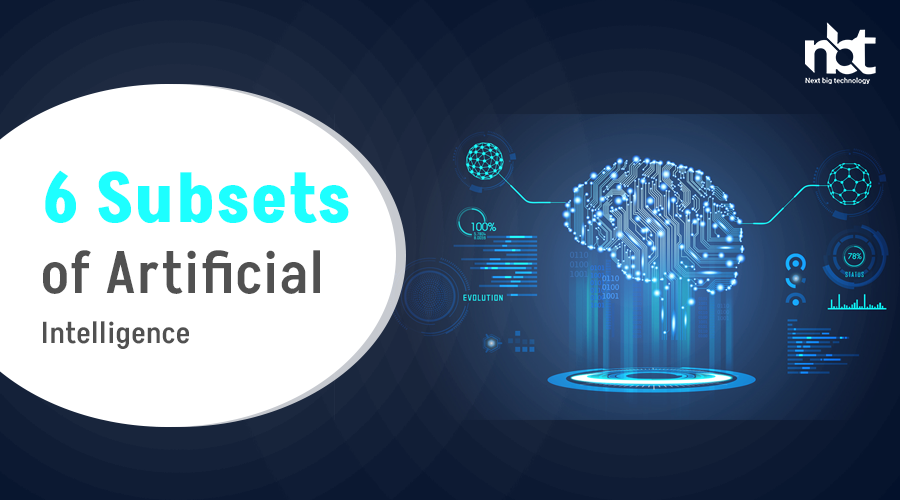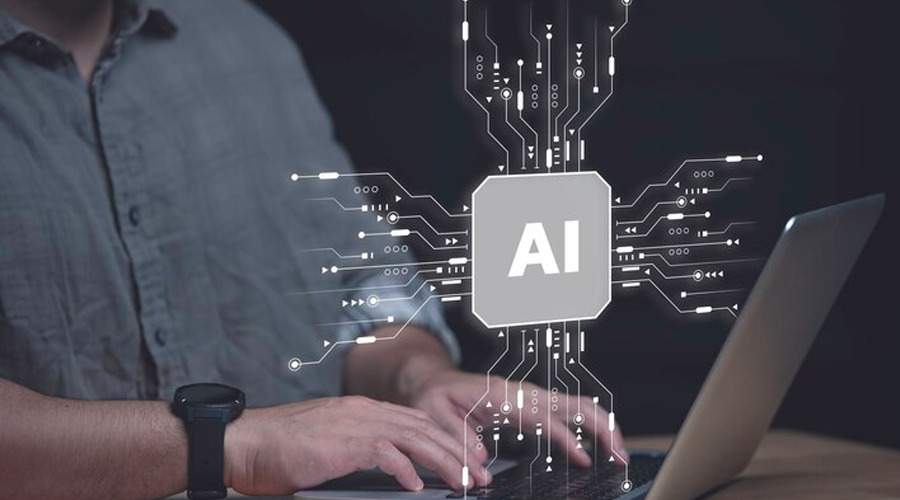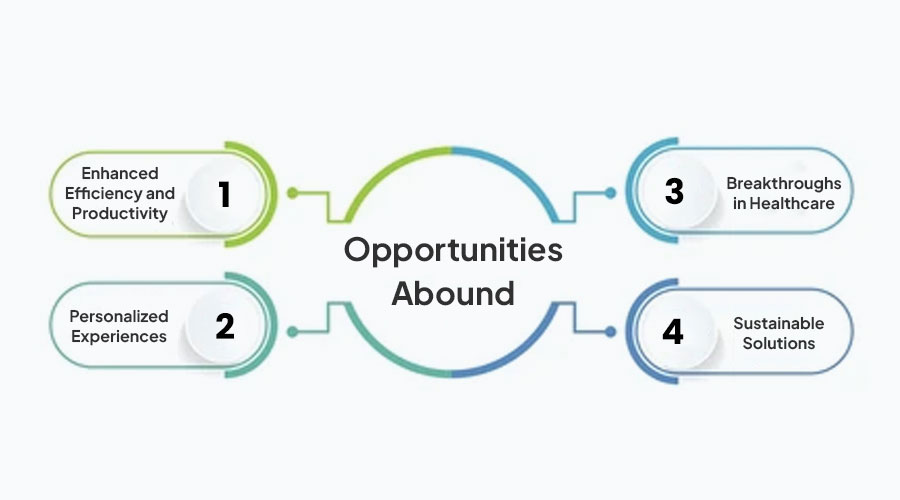Table of Contents
Introduction to Artificial Intelligence (AI)
In the realm of technological advancements, there exists a phenomenon that is reshaping industries, revolutionizing processes, and redefining human capabilities – Artificial Intelligence (AI). As we navigate through the 21st century, AI stands at the forefront, promising unprecedented opportunities and challenges alike. Let’s embark on a journey to unravel the essence of AI, its significance, and its transformative potential.
Understanding Artificial Intelligence (AI): At its core, AI refers to the simulation of human intelligence in machines, enabling them to perform tasks that typically require human cognition. These tasks encompass a wide spectrum, ranging from problem-solving and decision-making to language translation and visual perception. Unlike traditional computer systems that follow predefined instructions, AI systems possess the ability to learn from data, adapt to new inputs, and iterate over time.
Types of AI: AI can be categorized into two main types: narrow AI and general AI. Narrow AI, also known as weak AI, is designed to perform specific tasks within a limited domain. Examples include virtual assistants like Siri and Alexa, recommendation systems, and autonomous vehicles. On the other hand, general AI, or strong AI, represents a theoretical concept where machines exhibit human-like intelligence across diverse tasks and contexts. While general AI remains a long-term goal, narrow AI applications continue to proliferate and drive innovation across industries.
Applications of AI: The applications of AI are manifold and span various sectors, including healthcare, finance, manufacturing, transportation, and entertainment. In healthcare, AI-powered systems aid in disease diagnosis, personalized treatment planning, and drug discovery, enhancing patient outcomes and reducing medical errors. Financial institutions leverage AI for fraud detection, algorithmic trading, and customer service automation, streamlining operations and improving efficiency. Furthermore, AI-driven advancements in robotics and automation are reshaping the landscape of manufacturing and transportation, driving productivity gains and cost savings.
Ethical and Societal Implications: While the potential benefits of AI are immense, it also raises ethical and societal concerns that warrant careful consideration. Issues such as data privacy, algorithmic bias, job displacement, and autonomous weapons pose significant challenges that require proactive measures and regulatory frameworks. As AI continues to permeate various facets of our lives, ensuring transparency, accountability, and fairness becomes imperative to harness its potential for the greater good.
The Future of AI: As we look ahead, the future of AI holds boundless possibilities. Advancements in machine learning, natural language processing, and robotics are poised to unlock new frontiers and transform industries in unprecedented ways. Moreover, the convergence of AI with other emerging technologies like blockchain, Internet of Things (IoT), and quantum computing promises to accelerate innovation and drive exponential growth.
Machine Learning: Foundation of AI
In the ever-evolving landscape of technology, one term that has garnered immense attention and acclaim is Artificial Intelligence (AI). Encompassing a realm of possibilities that seem straight out of science fiction, AI is revolutionizing industries, driving innovation, and reshaping the way we interact with the world around us. At the heart of this transformative power lies a fundamental concept: Machine Learning.
Machine Learning (ML) serves as the bedrock upon which the edifice of AI stands tall. It is the engine that powers AI systems, enabling them to learn from data, identify patterns, and make decisions with minimal human intervention. But what exactly is Machine Learning, and why is it hailed as the cornerstone of AI?
At its core, Machine Learning is a subset of AI that focuses on the development of algorithms capable of learning from and making predictions or decisions based on data. Unlike traditional computer programs that follow predefined rules, ML algorithms have the ability to improve their performance over time as they are exposed to more data. This capability is what sets ML apart and makes it indispensable in the realm of AI.
One of the key concepts in Machine Learning is the notion of training data. Essentially, ML algorithms learn from examples provided in the form of data points. These data points contain features or attributes that are used to make predictions or classifications. Through a process called training, the algorithm adjusts its internal parameters to minimize errors and improve its performance on new, unseen data.
There are several types of Machine Learning algorithms, each suited to different tasks and scenarios. Supervised learning, for instance, involves training the algorithm on labeled data, where each data point is associated with a corresponding target or outcome. This type of learning is commonly used in tasks such as regression and classification.
On the other hand, unsupervised learning operates on unlabeled data, seeking to uncover hidden patterns or structures within the data itself. Clustering and dimensionality reduction are typical applications of unsupervised learning, offering insights into the underlying organization of data without the need for explicit labels.
Furthermore, there is reinforcement learning, a paradigm where agents learn to interact with an environment through trial and error, receiving feedback in the form of rewards or penalties. This form of learning is particularly prominent in fields like robotics and game playing, where agents must learn optimal strategies through repeated experimentation.
The widespread adoption of Machine Learning across industries underscores its significance in driving the advancement of AI. From personalized recommendations on streaming platforms to predictive maintenance in manufacturing, ML algorithms are ubiquitous, enhancing efficiency, accuracy, and decision-making capabilities.
Looking ahead, the future of AI undoubtedly hinges on the continued progress and innovation in Machine Learning. As datasets grow larger, computational power increases, and algorithms become more sophisticated, the potential for ML to revolutionize our world becomes even more profound. Whether it’s in healthcare, finance, transportation, or beyond, Machine Learning will continue to serve as the foundation upon which the marvels of AI are built.
Expert Systems: Mimicking Human Expertise
In the intricate realm of technology, where innovation is ceaseless and boundaries are ever-expanding, the concept of expert systems stands as a testament to the ingenuity of human intellect. These systems, designed to mimic human expertise and decision-making processes, have revolutionized various industries, from healthcare to finance and beyond. But what exactly are expert systems, and how do they emulate the nuanced capabilities of human experts?
Expert systems, at their core, are computer programs imbued with knowledge derived from human experts in a particular field. They utilize advanced algorithms, data analytics, and rule-based logic to simulate the decision-making abilities of human experts. By capturing and codifying the expertise of domain specialists into a digital format, these systems can analyze complex problems, provide insightful recommendations, and even make autonomous decisions.
The development of expert systems can be traced back to the early days of artificial intelligence (AI) research, where pioneers envisioned machines that could replicate human thought processes. One of the landmark achievements in this field was the creation of MYCIN in the 1970s, an expert system designed to diagnose bacterial infections and recommend suitable antibiotics with a level of accuracy comparable to that of experienced physicians.
Since then, the capabilities of expert systems have evolved exponentially, thanks to advancements in computing power, machine learning algorithms, and data accessibility. Today, these systems encompass a wide array of functionalities, ranging from diagnostic support in medical imaging to fraud detection in financial transactions.
So, how do expert systems mimic human expertise? At the heart of their operation lies knowledge representation, which involves capturing expert knowledge in a structured format that a computer can understand and manipulate. This knowledge is typically encoded using a combination of rules, ontologies, and machine-readable data.
Moreover, expert systems employ inference engines that utilize this encoded knowledge to draw conclusions, make recommendations, and solve problems. These inference engines can employ various reasoning techniques, such as deductive reasoning, probabilistic reasoning, and fuzzy logic, to navigate complex decision spaces and arrive at optimal solutions.
Furthermore, expert systems often incorporate learning mechanisms that enable them to adapt and improve over time. Through techniques like machine learning and case-based reasoning, these systems can refine their knowledge base, learn from past experiences, and enhance their decision-making capabilities in dynamic environments.
The applications of expert systems are diverse and far-reaching. In healthcare, they assist clinicians in diagnosing diseases, designing treatment plans, and predicting patient outcomes. In finance, they analyze market trends, assess investment risks, and detect fraudulent activities. In manufacturing, they optimize production processes, troubleshoot equipment failures, and ensure quality control.
However, despite their remarkable capabilities, expert systems are not without limitations. They heavily rely on the accuracy and completeness of the knowledge provided by human experts, which can be subjective, biased, or outdated. Moreover, they may struggle to handle novel or unforeseen situations that fall outside their pre-defined knowledge domain.
Computer Vision: Interpretation of Visual Data
In the realm of technology, where innovation is the key driving force, computer vision stands tall as a groundbreaking field revolutionizing the way we interpret visual data. From self-driving cars to facial recognition systems, its applications are diverse and impactful, permeating various aspects of our lives. Let’s delve deeper into the fascinating world of computer vision and explore its intricacies.
Understanding Computer Vision:
At its core, computer vision encompasses the ability of machines to interpret and understand the visual world. Mimicking human vision, it enables computers to process, analyze, and derive meaningful insights from digital images or videos. This involves tasks such as object detection, image classification, facial recognition, and scene understanding, among others.
The Working Mechanism:
Computer vision algorithms rely on advanced techniques from the fields of artificial intelligence, machine learning, and deep learning. Convolutional Neural Networks (CNNs) have emerged as a powerful tool in this domain, allowing machines to automatically learn features from images and make predictions based on them. Through extensive training on vast datasets, these networks become adept at recognizing patterns and making accurate interpretations.
Applications in Various Industries:
The impact of computer vision spans across diverse industries, bringing forth a wave of innovation and efficiency.
- Automotive Sector: In the automotive industry, computer vision plays a pivotal role in the development of autonomous vehicles. By processing data from cameras and sensors, these vehicles can perceive their surroundings, detect obstacles, and make informed decisions, paving the way for safer and more efficient transportation systems.
- Healthcare: In healthcare, computer vision aids in medical imaging analysis, disease diagnosis, and surgical procedures. It facilitates the interpretation of medical images such as X-rays, MRIs, and CT scans, assisting healthcare professionals in accurate diagnosis and treatment planning.
- Retail: Retailers utilize computer vision for various purposes, including inventory management, customer tracking, and personalized shopping experiences. Automated checkout systems and smart shelves are just a couple of examples showcasing its potential in revolutionizing the retail landscape.
- Security and Surveillance: Security systems leverage computer vision for real-time monitoring, threat detection, and facial recognition. It enhances security measures by identifying suspicious activities and unauthorized individuals, thereby bolstering public safety.
Future Prospects and Challenges:
As technology continues to evolve, the future of computer vision holds immense promise. Advancements in hardware capabilities, coupled with the advent of novel algorithms, are poised to unlock new possibilities and applications. However, challenges such as data privacy concerns, algorithmic biases, and ethical considerations loom large, necessitating careful deliberation and responsible development practices.
AI in Finance: Predictive Analytics and Risk Management
In the ever-evolving landscape of finance, the integration of Artificial Intelligence (AI) has emerged as a game-changer, particularly in predictive analytics and risk management. As financial institutions navigate through complexities and uncertainties, AI-powered solutions offer unprecedented insights, efficiency, and risk mitigation strategies. Let’s delve into how AI is reshaping the finance sector through predictive analytics and risk management.
Predictive Analytics: Predictive analytics involves the use of historical data, statistical algorithms, and machine learning techniques to identify future outcomes. In finance, this capability holds immense value, enabling institutions to forecast market trends, customer behavior, and investment performance with remarkable accuracy. AI algorithms analyze vast amounts of data in real-time, uncovering patterns and correlations that human analysts might overlook.
By leveraging AI-driven predictive analytics, financial institutions can optimize decision-making processes across various domains. For instance, AI models can predict stock market movements, enabling traders to execute timely transactions and capitalize on profitable opportunities. Similarly, banks can use predictive analytics to assess creditworthiness, detect fraud, and personalize customer experiences based on individual preferences and risk profiles.
Risk Management: Effective risk management lies at the heart of financial stability and success. Traditionally, risk assessment relied heavily on historical data and manual analysis, which often fell short in capturing dynamic market dynamics and emerging threats. AI revolutionizes risk management by offering advanced tools for identifying, assessing, and mitigating risks in real-time.
AI algorithms excel in processing large datasets and detecting anomalies or patterns indicative of potential risks. In credit risk assessment, machine learning models analyze borrower data to predict default probabilities accurately. Moreover, AI-powered fraud detection systems can detect suspicious transactions and fraudulent activities with heightened precision, safeguarding financial institutions and their customers from monetary losses and reputational damage.
Benefits of AI in Finance: The integration of AI in predictive analytics and risk management yields numerous benefits for financial institutions:
- Enhanced Accuracy: AI algorithms leverage sophisticated mathematical models to generate precise predictions and risk assessments, reducing errors and enhancing decision quality.
- Improved Efficiency: Automation of routine tasks streamlines processes, enabling financial professionals to focus on high-value activities such as strategy development and client relationships.
- Real-time Insights: AI-driven analytics provide real-time insights into market trends, customer behaviors, and risk exposure, empowering institutions to adapt swiftly to changing conditions.
- Cost Reduction: By automating manual processes and minimizing the need for human intervention, AI solutions lower operational costs and improve overall profitability.
- Regulatory Compliance: AI-powered risk management systems ensure compliance with regulatory requirements by continuously monitoring transactions and identifying potential compliance breaches.
AI in Automotive Industry: Autonomous Driving and Safety
In the dynamic landscape of the automotive industry, one of the most transformative advancements of recent years has been the integration of artificial intelligence (AI) into vehicles, particularly in the realm of autonomous driving. This technological leap holds the promise of not only reshaping how we perceive transportation but also significantly enhancing safety on our roads.
Autonomous Driving: Redefining Mobility: The concept of autonomous driving, once confined to the realms of science fiction, is now a tangible reality. AI-powered systems enable vehicles to perceive their environment, interpret data from various sensors, and make informed decisions to navigate safely without human intervention. From basic driver assistance features like lane-keeping and adaptive cruise control to fully autonomous driving capabilities, AI is revolutionizing the way we move from point A to point B.
Enhanced Safety Through AI: One of the primary motivations driving the development of autonomous driving technology is the potential to mitigate human errors, which are a leading cause of road accidents. By leveraging AI algorithms, vehicles can react faster and more accurately to potential hazards, thus reducing the likelihood of collisions.
Sensing the Environment: Central to the success of autonomous driving systems is their ability to perceive and understand the surrounding environment. Through an array of sensors such as cameras, lidar, radar, and ultrasonic sensors, AI-equipped vehicles can gather real-time data about road conditions, traffic patterns, and obstacles. Advanced computer vision algorithms analyze this data to identify pedestrians, cyclists, other vehicles, and road markings, allowing the vehicle to make informed decisions about its trajectory and speed.
Predictive Analytics: AI algorithms excel at recognizing patterns and predicting future events based on historical data. In the context of autonomous driving, this capability is invaluable for anticipating potential risks on the road. By analyzing vast amounts of data from past accidents and near-misses, AI systems can identify high-risk scenarios and take preemptive measures to avoid them. For example, if an AI detects a vehicle ahead suddenly braking, it can react almost instantaneously, potentially preventing a rear-end collision.
Continuous Learning and Improvement: One of the most compelling aspects of AI is its ability to learn and adapt over time. Autonomous driving systems are constantly gathering data from every journey, allowing them to refine their algorithms and become even more adept at navigating complex environments. This iterative learning process ensures that AI-equipped vehicles are always improving their performance and safety capabilities.
Challenges and Considerations: Despite the tremendous potential of AI in enhancing automotive safety, several challenges remain. Ensuring the reliability and robustness of AI algorithms in diverse and unpredictable driving conditions is a significant hurdle. Additionally, ethical considerations regarding decision-making in critical situations and the potential job displacement caused by widespread adoption of autonomous vehicles are subjects of ongoing debate.
AI in Gaming: Adaptive and Immersive Experiences
In recent years, the convergence of artificial intelligence (AI) and gaming has ushered in a new era of interactive entertainment. With advancements in AI technology, gaming experiences have become more adaptive and immersive than ever before. From intelligent NPCs (non-playable characters) to dynamic environments, AI has revolutionized the way players engage with virtual worlds. In this article, we delve into the fascinating realm of AI in gaming, exploring its impact on creating adaptive and immersive experiences.
Understanding AI in Gaming: AI in gaming refers to the integration of artificial intelligence algorithms and techniques to enhance various aspects of game design, development, and gameplay. Unlike traditional games with predetermined outcomes, AI-powered games can dynamically adjust gameplay elements based on player actions, preferences, and skill levels. This adaptive nature of AI enables personalized gaming experiences tailored to individual players, thereby maximizing engagement and enjoyment.
Adaptive Gameplay Mechanics: One of the most significant contributions of AI to gaming is its ability to adapt gameplay mechanics in real-time. Through machine learning algorithms, games can analyze player behavior, learning patterns, and skill levels to adjust difficulty levels, pacing, and challenges accordingly. For example, in a role-playing game (RPG), AI can dynamically scale enemy strength and tactics based on the player’s performance, ensuring a balanced and challenging experience without overwhelming or boring the player.
Intelligent NPCs and Virtual Characters: Gone are the days of predictable NPC behavior in games. With AI, NPCs and virtual characters exhibit a higher degree of intelligence, autonomy, and emotional responsiveness. These AI-driven entities can interact with players in more meaningful and lifelike ways, adapting their dialogue, actions, and decisions based on the context of the game world and the player’s interactions. Whether it’s a friendly companion providing valuable assistance or a cunning adversary employing sophisticated strategies, AI-powered NPCs enhance the depth and immersion of gaming experiences.
Dynamic Environments and Procedural Generation: AI algorithms play a crucial role in creating dynamic and immersive game environments through procedural generation techniques. Instead of static worlds, AI can generate vast, procedurally generated landscapes, dungeons, and levels that offer endless exploration and discovery. Moreover, AI-driven systems can simulate realistic weather patterns, day-night cycles, and ecosystem dynamics, further enhancing the immersion and realism of virtual worlds.
Enhanced User Experience with AI Assistants: Beyond gameplay mechanics and virtual characters, AI-powered assistants are reshaping the user experience in gaming. From voice-activated commands to personalized recommendations, AI assistants provide players with valuable assistance and guidance throughout their gaming journey. Whether it’s suggesting optimal strategies, providing hints during challenging puzzles, or assisting with in-game navigation, AI assistants enhance accessibility and engagement for players of all skill levels.
AI in Customer Service: Chatbots and Virtual Assistants
In today’s digital age, customer service is undergoing a transformation unlike any other, thanks to the integration of artificial intelligence (AI) in the form of chatbots and virtual assistants. These innovative technologies are reshaping the way businesses interact with their customers, offering personalized support, instant responses, and round-the-clock assistance. In this article, we delve into the profound impact of AI in customer service and explore how chatbots and virtual assistants are revolutionizing the industry.
Enhanced Customer Experience: One of the primary advantages of AI-powered chatbots and virtual assistants is their ability to provide an enhanced customer experience. By leveraging natural language processing (NLP) and machine learning algorithms, these systems can understand and respond to customer inquiries in real-time. Whether it’s answering frequently asked questions, guiding users through troubleshooting processes, or providing product recommendations, AI-driven assistants offer swift and accurate support, leading to higher levels of customer satisfaction.
24/7 Availability: Unlike human agents who are bound by time constraints, AI-powered chatbots and virtual assistants are available round-the-clock. This 24/7 availability ensures that customers can receive assistance whenever they need it, regardless of the time zone or location. Whether it’s late at night or during peak hours, AI-driven systems can handle customer queries efficiently, reducing wait times and improving overall responsiveness.
Cost Efficiency: Implementing AI in customer service can also lead to significant cost savings for businesses. While hiring and training human agents can be expensive, AI-powered chatbots and virtual assistants offer a cost-effective alternative. Once deployed, these systems can handle a high volume of inquiries simultaneously without incurring additional expenses. Moreover, they can scale effortlessly to accommodate growing demand, making them a scalable solution for businesses of all sizes.
Personalized Interactions: AI-driven chatbots and virtual assistants excel at delivering personalized interactions tailored to each customer’s needs and preferences. Through data analysis and machine learning, these systems can gather insights about individual users, such as their purchase history, browsing behavior, and demographics. Armed with this information, AI-powered assistants can offer relevant recommendations, personalized product suggestions, and targeted promotions, enhancing the overall customer experience.
Continuous Improvement: One of the most remarkable aspects of AI is its ability to learn and adapt over time. As chatbots and virtual assistants interact with customers, they continuously gather data and feedback, which is used to improve their performance. Through iterative updates and refinements, these systems become increasingly adept at understanding and addressing customer inquiries, leading to higher levels of accuracy and efficiency.
Integration with Existing Systems: AI-powered chatbots and virtual assistants can seamlessly integrate with existing customer service platforms, such as websites, mobile apps, and social media channels. This integration ensures a smooth transition for both businesses and customers, allowing them to access AI-driven support without disrupting their existing workflows. Whether it’s through a website widget, messaging app, or voice interface, AI-powered assistants can engage with customers across multiple touchpoints, providing a unified and cohesive experience.
Ethical Considerations in AI Development and Deployment
In the ever-evolving realm of artificial intelligence (AI), the ethical considerations surrounding its development and deployment have become increasingly paramount. As AI technologies continue to permeate various aspects of our lives, from healthcare to finance, from education to entertainment, it becomes imperative to ensure that these advancements align with ethical principles and societal values.
Ethical considerations in AI development encompass a broad spectrum of concerns, ranging from privacy and data security to bias and fairness, and from transparency to accountability. At the heart of these considerations lies the question of how AI systems should be designed, trained, and utilized to maximize benefits while minimizing harm.
One of the foremost ethical concerns in AI development is the issue of bias. AI algorithms, often trained on historical data, can inherit biases present in the data, leading to discriminatory outcomes, particularly against marginalized groups. Addressing bias in AI requires careful attention to data collection, algorithm design, and ongoing monitoring to mitigate unintended consequences.
Moreover, transparency and accountability are essential pillars of ethical AI development. Users and stakeholders must understand how AI systems make decisions and be able to hold developers and deployers accountable for their actions. This necessitates clear documentation, explainability of algorithms, and mechanisms for recourse in cases of algorithmic errors or misuse.
Privacy and data security are also significant ethical considerations in AI development and deployment. AI systems often rely on vast amounts of personal data, raising concerns about consent, data ownership, and potential misuse. Developers must prioritize data protection measures, such as anonymization and encryption, and adhere to robust privacy regulations to safeguard individuals’ rights and liberties.
Furthermore, ethical AI development entails considering the broader societal impacts of AI technologies. Developers should assess the potential socioeconomic consequences of AI deployment, including job displacement, economic inequality, and the exacerbation of existing power differentials. Mitigating these impacts may require proactive measures, such as reskilling programs and inclusive policymaking.
In navigating the ethical landscape of AI development and deployment, interdisciplinary collaboration is key. Ethicists, technologists, policymakers, and other stakeholders must work together to identify ethical challenges, develop guiding principles, and implement best practices. This collaborative approach can foster a culture of responsible AI innovation that prioritizes human well-being and societal good.
















